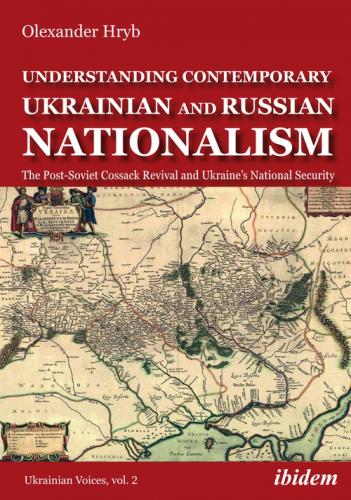3.1.2 Influence of the EU-NATO Security Community Expansion on Russian-Ukrainian Relations
4.1. The Heritage of Soviet Ethnography and the Revival of Ethno-Geopolitics in Russia
4.2. Ethno-Geopolitics of Putin’s Eurasianism
4.2.1 What is Putin’s Eurasianism?
4.2.2 Putin’s Nationalism: Known Knowns
4.2.3 Putin’s Nationalism: Known Unknowns
4.2.4 Revival of Political Eurasianism Ideology in Russia
4.2.5 New Eurasianism: Implications and Contradictions
4.2.6 Unknown Unknowns of Putin’s Eurasianism
4.3. The Cossack Revival in Russia
4.4. The Heritage of Soviet Ethnography and Ethno-Geopolitical Discourse in Ukraine
4.5. The Cossack Revival in Ukraine
5.1. Nationalism as a Modern Belief System
5.2. Nationalism, Federalism and Civil Society
Summary und Conclusions of the Book
Appendix 1: The Case Study of the Black Sea Cossack Revival
1.2. Phases of Fieldwork and of Fieldwork Methods Application
1.3. Evolution of Personal Identities—Shift Towards Cossack Identification
1.4. Black Sea Cossacks—Self-Image and Perception of Others
2.1. Description of the Two Cossack Movements
2.2. The Origin of Conflicting Interests
2.3. Self-Perception of Parties
2.4. An Attempt to Solve the Problem
ABBREVIATIONS
ASSR Autonomous Soviet Socialist Republic
BBC British Broadcasting Corporation
CIS Commonwealth of Independent States
CPSU Communist Party of the Soviet Union
ESO Ethno-Social Organism
EU European Union
EAEU Eurasian Economic Union
FSU Former Soviet Union
GMT Greenwich Mean Time
IMF International Monetary Fund
IR International Relations
ITAR TASS—Russian Information Agency
KGB Soviet Security Service
KLA Kosovo Liberation Army
MOD Ministry of Defense
MP Member of Parliament
MVD Ministry of Interior in the USSR or the Russian Federation
NATO North Atlantic Treaty Organization
NCA National Cultural Autonomy
NEO New European Order
NIS Newly Independent States
NTV Russian National Television
NUAS National Ukrainian Academy of Science
OSCE Organization of Security and Cooperation in Europe
RSK Republic of Serbian Krajina
RSFSR Russian Soviet Federative Socialist Republic
SBU Ukrainian Security Service
SWB Short Wave Broadcast reports by the BBC Monitoring
UAF Ukrainian Armed Forces
UK Ukrainian Cossack Organization
UK United Kingdom
UNIAR Ukrainian Independent News Agency Respublika
UPA Ukrainian Resurgence Army
USA United States of America
USSR Union of Soviet Socialist Republics
VDV Soviet and then Russian or Ukrainian paratroopers’ military formations
WW2 Second World War
Foreword
Strangers to Themselves
By Vitali Vitaliev
Olexander Hryb has written an extremely topical book, the main subject of which is national identity.
Let’s face it: nationalism—in all its different guises and manifestations—remains one of the main divisive factors on the global, read federal, scale and, at the same time, one of the main uniting ideologies on the local, read provincial, level. There’s no need to give examples—suffice it is to open a daily newspaper, turn on radio or TV, or do a quick browse of the Internet—and you will be showered with them.
But
